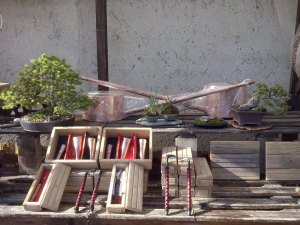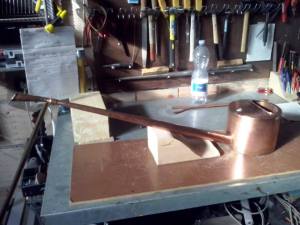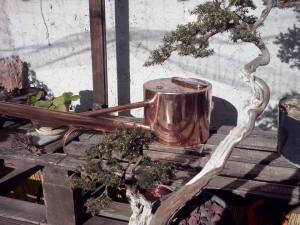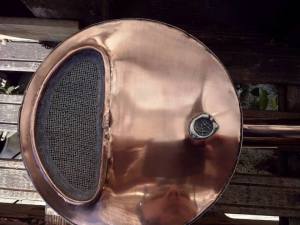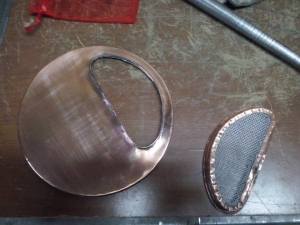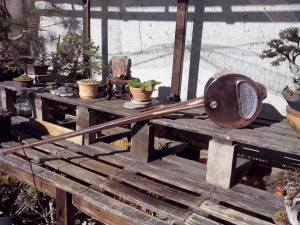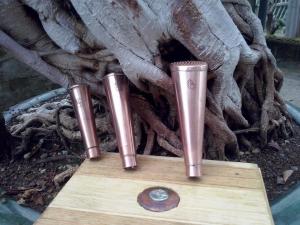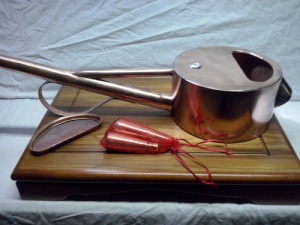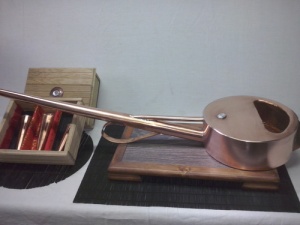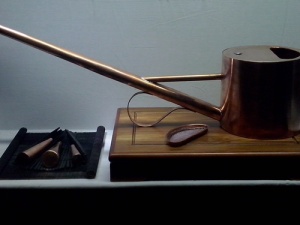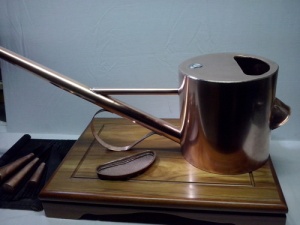di Salvatore Tarantino
L’annaffiatura è un’operazione che giornalmente facciamo a volte senza pensare che è una di quelle operazioni più difficili da imparare per far star in salute i nostri bonsai.
The watering is a daily task that sometimes we do not think that is one of those operations more difficult to learn to star in our health bonsai.
La caratteristica principale dei miei innaffiatoi è il modo in cui li costruisco: vengono sagomati, battuti e saldati con stagno al 50% argento utilizzando tecniche e utensili esclusivamente artigianali. Nessun pezzo è lavorato con macchinari industriali come presse, calandre, bordatrici ed altro. Il rame utilizzato è di spessore 6/10, di gran lunga più duro e resistente rispetto a quello di 4/10 utilizzato in genere.
La forma e l’inclinazione del soffione è il risultato di studi ben precisi che i maestri nipponici hanno eseguito nel corso del tempo. La parte più importante è l’ugello, composto da forellini molto sottili e da una forma che prolunga il soffione. Sono proprio questi fori uniti alla pressione dell’acqua che danno la possibilità bagnare con estrema delicatezza i nostri bonsai, permettendo al substrato di assorbire l’acqua in maniera graduale, senza spazzarlo via.
Le varie tipologie di innaffiatoi : 2L, 3L,3.5L, 4L, 4.5L, 5L, 5.5L, 6L
The main feature of my watering cans is the way I build them : they are shaped , beaten and soldered with tin 50% silver exclusively handcrafted using techniques and tools . No piece is worked with industrial machinery such as presses , calenders , flanging , and more. The copper used is 6/10 , far harder and more durable than that of 4/10 typically used .
The shape and the inclination of the head is the result of precise studies that the Japanese masters have executed in the course of time . The most important part is the nozzle , consists of small holes very thin and of a shape which prolongs the showerhead . It is these holes combined with the pressure of the water that give the opportunity to bathe with extreme delicacy of our bonsai , allowing the substrate to absorb water gradually, without sweep it away .
Le varie tipologie di ugelli: 26mm per i mame, 30mm per gli shoin, 40mm per i master.
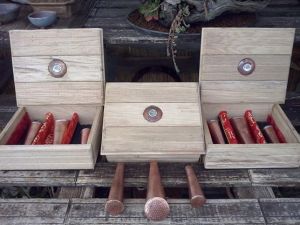
Spedizione disponibile in Italia e nei principali paesi del mondo.
Shipping available in Italy and in the major countries of the world.
Per info più dettagliate :
For info:
https://www.facebook.com/STartebonsai
http://artebonsai.ecwid.com/simple-store
oppure scrivetemi a
ARTEBONSAI@HOTMAIL.IT

